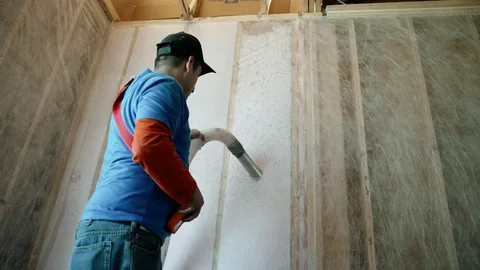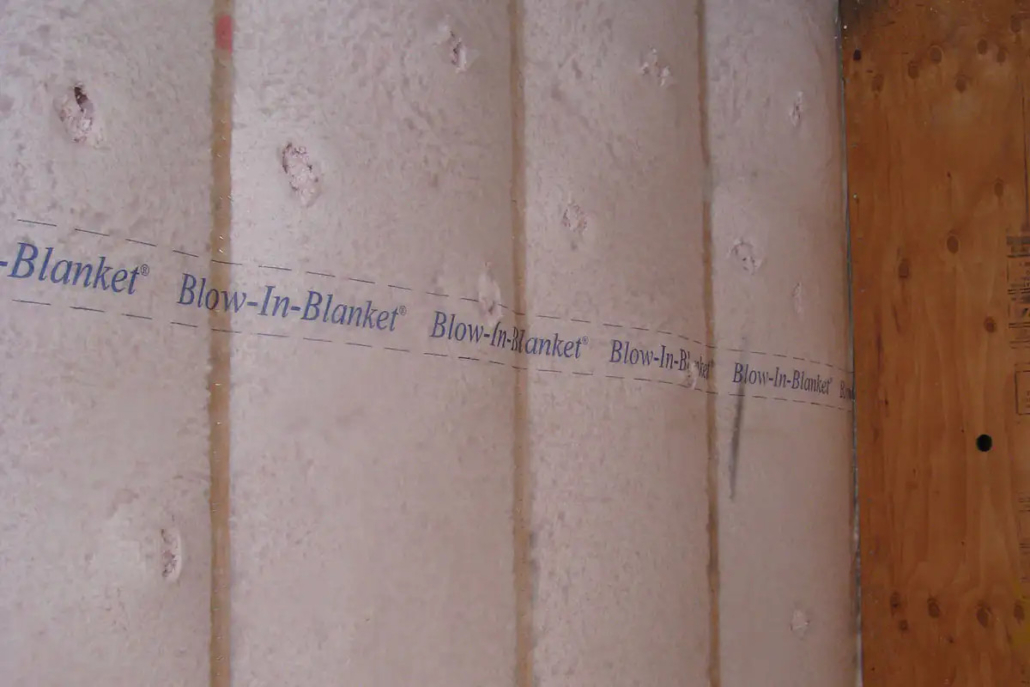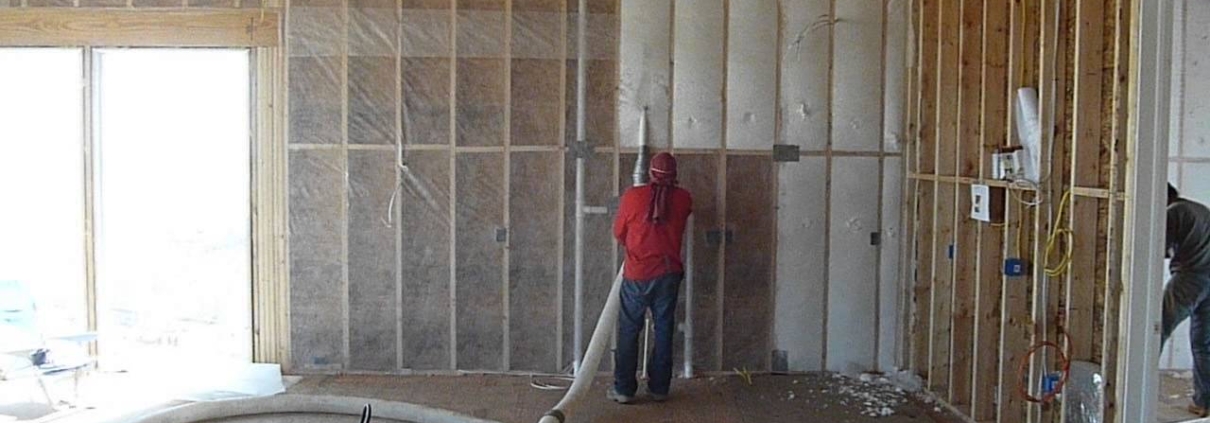An In-Depth Look at the Blown-In Blanket System for Superior Coverage
Insulation systems directly affect how well a property manages energy use, indoor comfort, and long-term durability. Among modern insulation options, the Blown-In Blanket System (BIBS) stands out for its ability to create seamless coverage and high thermal performance. Both residential and commercial property owners are considering BIBS for its proven effectiveness in controlling energy loss and improving building health.
This article explains how the Blown-In Blanket System works, what makes it unique compared to traditional insulation, and the advantages it brings when installed correctly.
How the Blown-In Blanket System Works
The Blown-In Blanket System fills wall cavities, floors, and ceilings with loose-fill fiberglass or mineral wool fibers contained within a netting system. The result is dense coverage that reduces air gaps, which are common with batt insulation.
Step-by-Step Installation
- A breathable netting is stapled across open stud cavities.
- Loose-fill insulation fibers are mechanically blown in behind the netting.
- The pressure ensures every corner and void is filled for consistent thermal resistance.
- The netting keeps the insulation in place while allowing future wall finishing.
Why Coverage Matters
Even small gaps in insulation reduce efficiency. The pressurized application of BIBS ensures insulation reaches irregular shapes and tight spots that standard batts often miss. This makes it especially useful in custom builds or renovations.
Comparing BIBS to Traditional Insulation
The Blown-In Blanket System often outperforms batt and loose-fill attic insulation because of its density and coverage.
| Factor | Traditional Batts | Blown-In Blanket System |
|---|---|---|
| Fit and Coverage | Gaps at edges and around wiring | Seamless fit with full cavity fill |
| Air Leakage Control | Moderate | High resistance to air movement |
| Installation Complexity | Simple but imprecise | Requires professional equipment |
| Thermal Performance (R-Value) | Inconsistent due to gaps | Consistently high per cavity |
| Long-Term Stability | Can sag or compress | Netting maintains placement |
Why Builders and Owners Prefer BIBS
Unlike batts, which often leave exposed voids, BIBS achieves a uniform layer across the entire surface. This consistency translates into stronger performance and measurable energy savings.

Energy Efficiency and Performance Advantages
The biggest reason property owners invest in BIBS is its proven ability to improve building efficiency.
Reduced Air Infiltration
Dense coverage limits drafts and uncontrolled airflow. This reduces strain on heating and cooling systems and improves indoor comfort.
Higher R-Value per Inch
When installed to manufacturer specifications, BIBS achieves higher R-values per inch than traditional fiberglass batts, making it suitable for areas with strict energy codes.
Acoustic Benefits
The dense fill also provides sound dampening, reducing noise transmission between rooms and from outside.
Applications in Residential and Commercial Properties
The system adapts to multiple property types, making it versatile for homeowners, contractors, and commercial managers.
Residential Installations
In homes, BIBS is often applied to exterior walls, ceilings, and bonus rooms where temperature differences are more noticeable. Its airtight coverage improves comfort and reduces monthly energy use.
Commercial Installations
In larger buildings, BIBS provides consistent insulation across large wall areas. Offices, schools, and healthcare facilities often select BIBS because of its energy efficiency and contribution to indoor air quality standards.

Long-Term Benefits of the Blown-In Blanket System
Choosing BIBS is not just about immediate comfort. It delivers lasting advantages over decades.
Durability
The insulation remains stable within the netting and does not settle, which helps maintain thermal performance throughout the building’s lifespan.
Moisture Resistance
Fiberglass and mineral wool fibers resist moisture absorption. This lowers the chance of mold or mildew growth inside wall cavities.
Energy Cost Savings
Consistent coverage reduces energy waste, translating into long-term savings on heating and cooling expenses.
Key Considerations Before Choosing BIBS
While BIBS offers superior coverage, property owners should understand installation requirements before deciding.
Professional Installation
The system requires specialized blowing equipment and trained installers. Attempting it without the right tools can lead to poor density and uneven coverage.
Project Timing
BIBS must be installed before drywall is applied. Proper scheduling during construction or renovation ensures the process runs smoothly.
Material Choice
Most BIBS applications use fiberglass, but mineral wool is an option for projects needing higher fire resistance. Selecting the right material ensures performance matches building needs.
Conclusion
The Blown-In Blanket System is an effective solution for property owners seeking insulation with seamless coverage, high density, and long-term stability. Unlike traditional batts, it fills every cavity, reducing air leakage and maintaining consistent thermal performance.
Both residential and commercial projects benefit from BIBS, as it delivers energy savings, enhances comfort, and improves long-term durability. For property owners prioritizing efficiency and complete coverage, BIBS remains one of the best insulation solutions available today.
FAQs
How does the Blown-In Blanket System differ from loose-fill insulation?
Loose-fill is typically applied in attics without containment. BIBS uses netting to hold dense insulation within wall or ceiling cavities, creating a sealed and uniform layer.
Can BIBS be installed in existing walls?
BIBS is best suited for new construction or open-wall renovations. In existing closed walls, dense-pack cellulose or injection foam may be more practical alternatives.
Does BIBS improve sound control in buildings?
Yes. The dense insulation fibers reduce airborne sound transmission, making it a good choice for offices, bedrooms, and multi-unit housing.
What types of insulation materials are used in BIBS?
Most systems use blown-in fiberglass, though mineral wool is available for higher fire resistance or added acoustic performance.
How long does the insulation last once installed?
BIBS does not settle or sag when properly installed. Its performance can last the lifetime of the building without needing replacement.
Author: With 15 years of banking experience and five years managing H&R Foam Insulation, Edith is passionate about building strong relationships with customers. Her favorite part of the role is connecting with clients and ensuring their needs are met as she works alongside them to improve the health, comfort, and energy efficiency of their homes.
Reviewer: With 7 years in the spray foam insulation business, Ella Adams offered useful feedback on this post, helping make sure the tips were both realistic and easy to apply.




Leave a Reply
Want to join the discussion?Feel free to contribute!